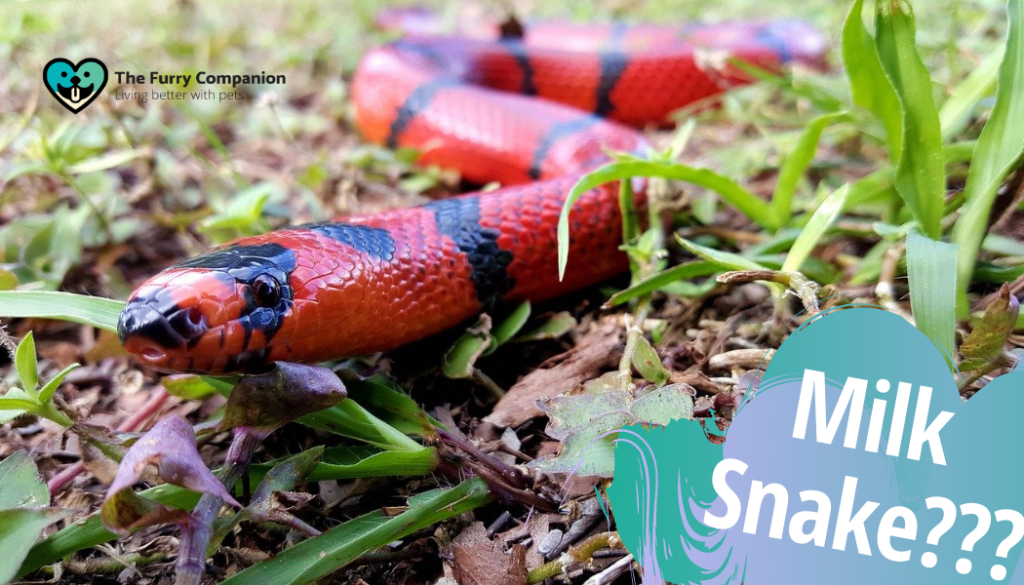Milk snake (Lampropeltis triangulum) is non-venomous and friendly, making it the best pet snake for reptilian enthusiast beginners. Their tri-colored scales add to their appeal to pet owners.
Milk snakes live in prairies and forested regions. Some even migrate during the winter and summer to find drier and cooler habitats, respectively. Their adaptations in the wild have helped them live an average of 12 long years. However, given the proper and appropriate care, milk snakes can live longer in captivity than in the wild!
In The Furry Companion, we believe that any kind of pet will make your life better through a nurturing environment. Here are some tips to help your milk snake live a lasting and healthy life with you.
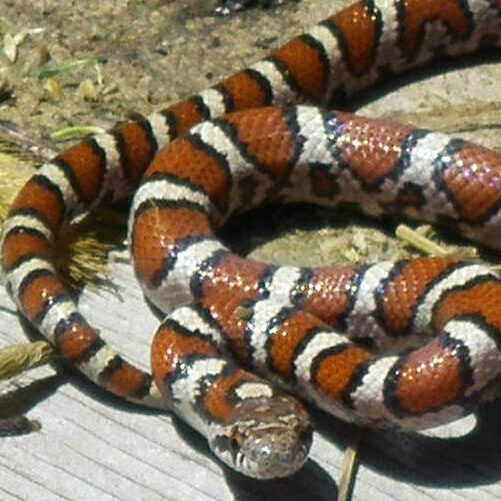
Table of Contents
Healthy Nutrition
A young milk snake usually eats insects and worms while adults eat mammals and even fellow reptiles. Milk snakes love to eat, and you might even find them biting themselves sometimes! Younglings need a thawed pink mouse every meal while the adults eat an adult mouse per feeding. Give your milk snake this reptile calcium vitamins.
Despite loving eating so much, a milk snake should follow a strict feeding schedule because of its metabolism. Snakes are known to have slow digestion. Apart from that, they can slow down their metabolism, enabling them to go as long as six months without food.
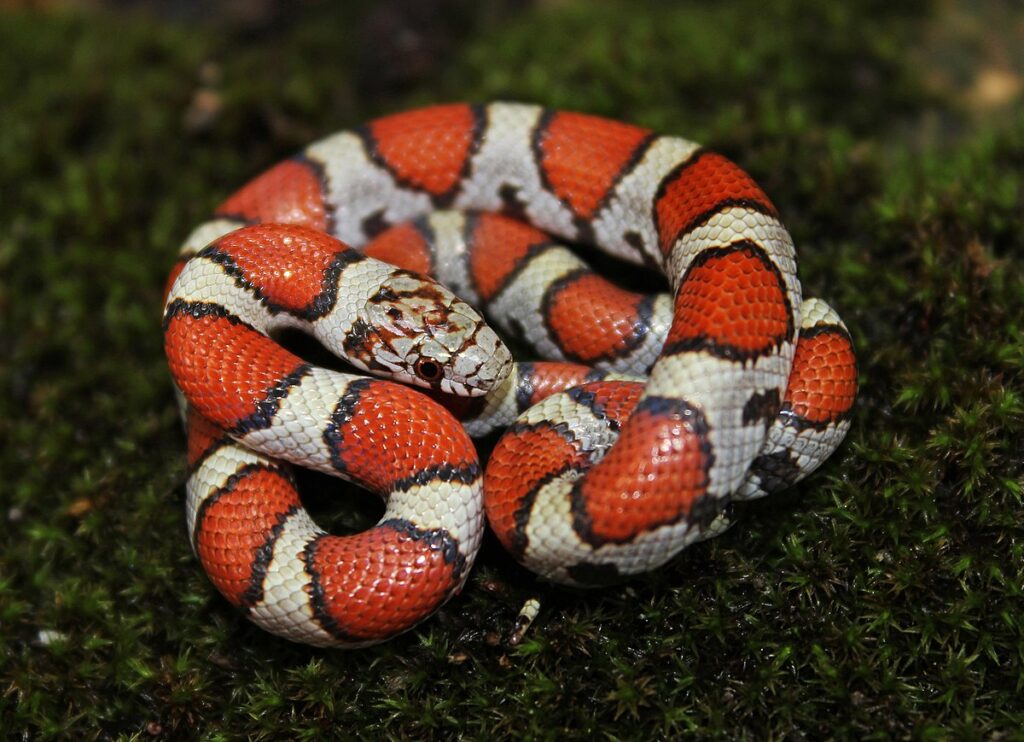
Feed the young milk snake once every 3-5 days help it develop. Once it’s fully-grown, which takes about 3-4 years, you can already feed it just once a week. But be sure to supply enough clean and drinkable water for your snakes regularly as they need hydration even when hibernating. Overfeeding your snakes may result in obesity.
Ensure that you feed your snakes with pre-killed rodents because live mice can fight back and hurt your pet. Also, if you have frozen meat, remember to thaw their meals before serving it to them. Prepare their food in a separate area to avoid cross-contamination with your food.
Habitat
Spacious and Cozy
Milk snakes are active snakes that grow up 52 inches so provide them with a generous amount of space. A young milk snake can live in a 10-gallon tank while a larger and full-grown milk snake needs a spacious 60-gallon tank. When in the wild, they are fond of burrowing under leaves or rocks. Naturalistic accessories such as coconut fiber beddings, aspen shavings, sphagnum moss, and branches help your snake thrive even in captivity. Check this transparent terrarium for your milk snake.
Temperature
The milk snake is a cold-blooded creature, so ensure that the heating in their tanks is conducive for them. Get a heating map and set the warm end at 85°F, and the cold end at 78°F. You can also place a water pot that is large and shallow enough for them to bask onto.
“Heat tape or heat mats (with rheostats or thermostats) can be used cautiously to bring the temperature of the enclosure up, but avoid hot rocks, as they can easily lead to burns,” says Niklos Weber, DVM.
Humidity
The humidity should also be around 40-60% for your caged environment to mimic your pet snake’s natural habitat. They are also nocturnal so provide white light only 8-12 hours a day. Infrared light is also handy for the rest of the day to help these snakes have the best environment. Buy this reptile fogger humidifier for your milk snake.
Their active lifestyle also enables them to move around a lot, so be sure that your tank has sliding doors instead of hinged trapdoors. Sliding doors will prevent your milk snake from quickly pushing the tank lid up and escaping. Additionally, milk snakes tend to bite on what they see and even feed on their fellow reptiles. Because of this, you should avoid housing more than one milk snake in one tank.
Clean their tank once a week with a 3% bleach solution and rinse it with water. Before returning your snakes into the tank, ensure that their house doesn’t smell like bleach anymore.
Hygiene
Monitor the shedding of your milk snake. A baby milk snake can shed up to 12 times every year while adult snakes only shed once every 2 or 3 months. Note that they shed their skin all at once. However, if their eye caps do not come off with their skin, seek veterinary care. Do not try to remove them on your own.
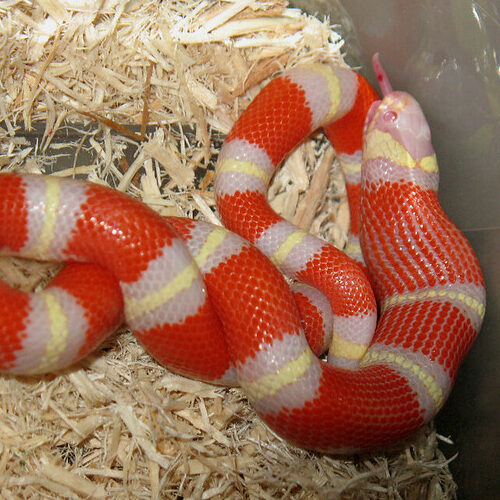
Avoid handling your milk snake while they are shedding to avoid conflict. A humid habitat also helps the process of snake skin shedding. Follow the tips given for their housing needs to ensure healthy shedding.
Milk Snake Petting Time
Milk snakes are not inherently friendly. Give them ample time to adjust to their environment before handling them. Practice petting them once in a while to gain their trust. Once they’re used to you, be sure that your hands are clean before and after your petting sessions.
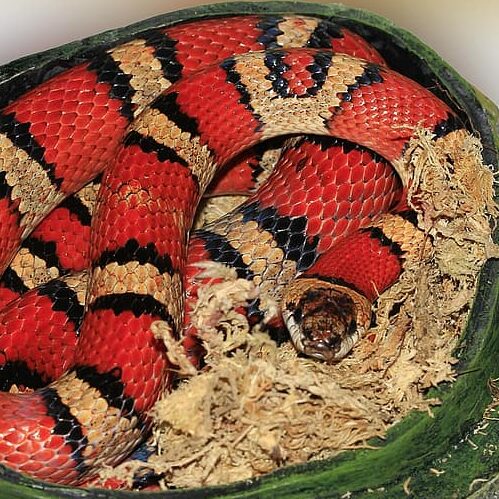
Avoid handling them right after feeding because this might cause your snake to vomit. Like many snakes, the milk snake is also extra sensitive during shedding. Giving them space during this process will be beneficial to you and your pet’s relationship.
A milk snake also loves to eat. So be careful when your hand smells like food because they may bite you. Milk snakes may be non-venomous creatures, but they are constrictors, so their clutches are like tight embraces. Unwrap them from your arms or fingers by handling their tails first because their heads are much more powerful.
Milk Snake Health Problems
Common health problems of milk snakes include dermatitis, stomatitis, ticks and mites, and respiratory diseases.
Respiratory problems are preventable by keeping your snake’s tank clean, humid, and spacious. Cleaning their tanks also helps your milk snake avoid contracting dermatitis. Among the common problems, stomatitis can be a cause of fatality. Immediately consult your veterinarian once you observe white formation symptoms in their mouth and loss of appetite.
“Infectious stomatitis (‘mouth rot’) is an infection of the mouth that appears as pinpoint hemorrhages on the gums or an excessive amount of thick mucus, possibly containing blood, or pus (resembling cottage cheese), in the mouth and at the inside edge of the front of the mouth,” Laurie Hess, DVM explains.
If you are considering getting a pet snake, Lianne McLeod, DVM advises to look out for the following, “Signs of a healthy snake include a firm, rounded body; no discharge from the nose; no dusty specks on the body of the snake (mites); no open-mouth breathing or gasping; inside of mouth looks pink (not red or cheesy); shiny, smooth skin (no sores or scabs), clean fecal opening (vent), and movement without tremors.”
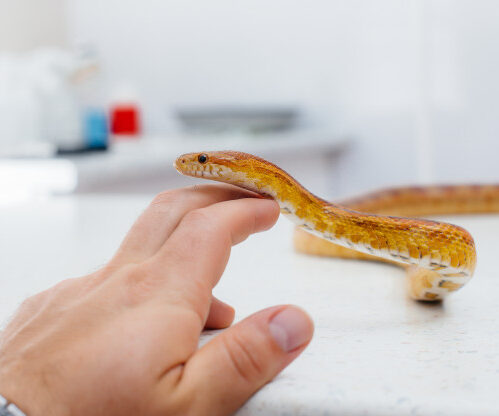
Snakes indeed require much more work than your typical pets. However, when you feel a growing affinity for reptiles, a milk snake is the best pet to start with. It can be low-maintenance in nature, but remember to provide a naturally cozy home, a healthy and scheduled diet, and enough pet care.
If you need better guidance on how to take care of your pet milk snake, approach us at The Furry Companion. We also have a list of pet professionals that will give the best services to your pets.
Frequently Asked Questions
Why is it called a milk snake?
The milk snakes got its name from the myth that they milk cows udders. Although milk snakes are indeed often found in farms and barns, the legend has remained to be unproven. Most likely because snakes have no lips and because cows would also not tolerate this behavior towards them. The milk snake loves borrowing in the hay, around the cows, contributing to creating the milking-cows myth.
Are milk snakes good beginner snakes?
The milk snake is a subspecies of the king snake. They are colorful and active snakes with red, black, and yellow bands. The smallest of the 24 subspecies can grow up to 24 inches while the largest, black milk snakes can grow up to 72 inches—almost 7 feet! They are also non-venomous but are constrictors, which make them suitable for handling. The milk snake is also pretty low-maintenance, which makes it the best snake for beginners.
Do milk snakes drink milk from cows?
A milk snake does not have the capability to milk cows as it does not have lips. The myth that the milk snake can milk from cows arose because it is typically present in barns, where cows live.
Are milk snakes endangered?
The milk snakes are not extinct but they are part of the least concerns of the International Union for Conservation of Nature (IUCN). Their threats have commonly been from human persecution due to their physical similarities with copperheads, coral snakes, and rattlesnakes.
Their natural habitats have also been decreasing due to urbanization and road construction. Increased pet-breeding and captivity have also caused significant pressure to milk snakes as a species.
Can milk snakes kill you?
The Milk snake is non-venomous, and so their bites are not harmful. Its defense mechanism is Batesian mimicry, which means that this snake has adapted to look like other more dangerous snakes to survive. The colors are usually a combination of black, red, and yellow, making it look like coral snakes and copperheads, which are venomous.
The milk snake also tends to rattle their tails as a defense mechanism when intimidated. This shaking of the tail also comes with the release of a foul odor. These mechanisms may lead to it being mistaken for rattlesnakes.
Because of their similarities with more dangerous snakes, the milk snake can be hard to identify. Ensure that the snakes you are purchasing or adopting are indeed milk snakes to avoid accidents in the future.
Do snakes like milk?
Snakes are also unable to digest dairy products. However, they may drink milk when feeling dehydrated. And when too thirsty, they may drink just about anything to quench their thirst.
Do snakes like being petted?
Snakes are wild animals, and so they do not care much for human touch or interaction. However, they love wrapping around anything they see. Hopefully, when trained from a young age, snakes can get used and even get comfortable with petting or handling. Once they get used to petting, snakes learn to trust you, and they can get used to being handled once in a while.
Do snakes feel love?
Snakes are incapable of feeling human emotions, such as love. However, they can feel a closeness to non-threatening creatures who care for it. They can also feel pleasure when given what they want, such as enough food and the right environment. After enough handling and caring for them, snakes will tolerate you and their life as pets.
Is a milk snake a good pet?
What do pet milk snakes eat?

